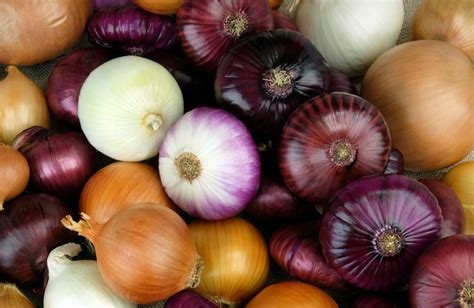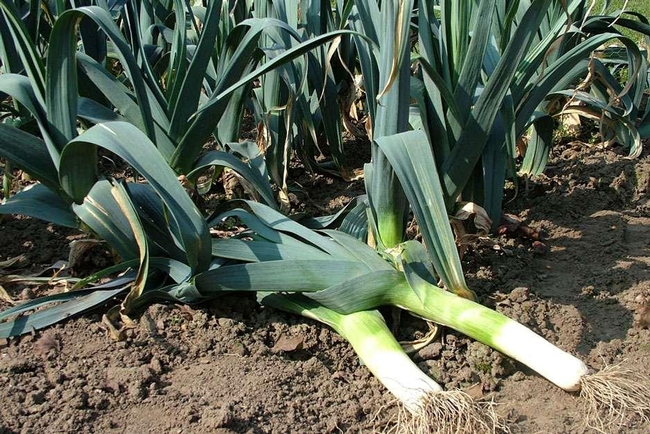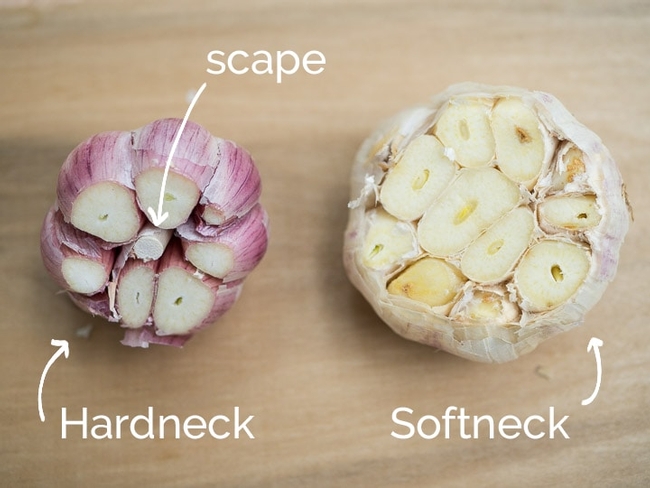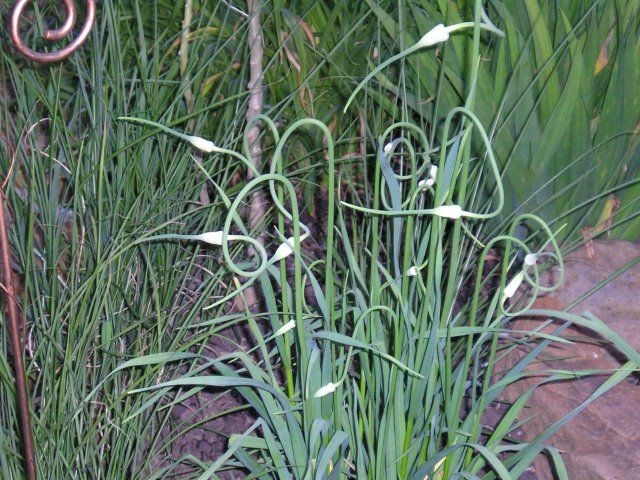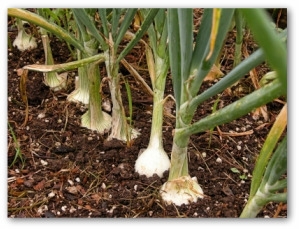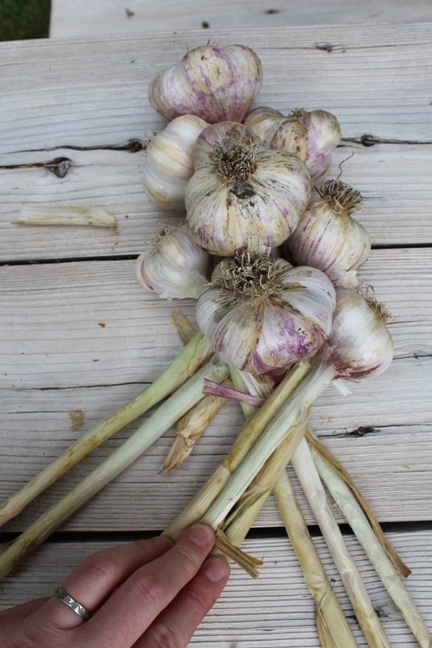By Susanne von Rosenberg, UC Master Gardener of Napa County
An easy way to spice up your vegetable garden is to plant onions and garlic. They are not difficult to grow. You can plant onions and leeks from now until January for harvest from May through July, depending on the variety. Plant garlic now through February.
Onions and garlic are in the allium family, along with leeks and shallots. Garlic and leeks take up very little room. You can grow them in containers or tuck them in among your flower beds.
Onions can be planted as seedlings from six-packs, as transplants (available at local nurseries now or soon) or as sets (baby onions). Sets are not recommended for California because the varieties are typically not adapted to our area and will bolt (form flowers rather than bulbs).
Planting at the wrong time will have the same result. Onions are cued to form bulbs by changes in day length. Intermediate-day onions and certain strains of long-day onions do best in our area; local nurseries have appropriate varieties. Short-day onions are not suitable for our area.
Yellow onions typically store better than white strains of the same type, and red onions fall somewhere in the middle. Leeks are also easily planted as seedlings. You can start onions and leeks from seed as well; make sure you pick varieties that are suitable for our area.
Although small, onion and leek seedlings and transplants are hardy. As long as you provide fertile soil and adequate water, they will thrive. Keep them well watered and weeded initially, then keep the soil moist through the spring. Depending on our rainfall, this may require regular watering.
Plant onions four inches apart; they need room to form bulbs. Alternatively, plant your seedlings or transplants closer together and thin them for use as green onions or spring (immature) onions. They are edible at all stages of growth.
To harvest leeks with long white sections, plant them at least four inches deep. Only the portion protected from sunlight will be white.
Onions are light feeders. Fertilize lightly before planting and again in early spring. When the leaves become less firm, the bulb is mature, and you can taper off the water. The bulb is fully mature when the leaves fall over. (They will still be green.) The first time I saw leaves flopped over, I thought some critter had trampled my onions.
Garlic is planted as individual cloves. Buy certified disease-free seed stock from a nursery, catalog or certified grower to avoid spreading disease in your garden. Consider trying an unfamiliar variety; there are hundreds of varieties of garlic from around the world, and they vary tremendously in pungency.
The two main categories of garlic are soft-neck and hard-neck. Soft-neck varieties (the kind you usually find at a supermarket) keep better than hard-neck types, but hard-neck varieties are easier to peel. Soft-neck varieties have multiple rows of cloves arranged around the center and average between 8 and 30 cloves per bulb. Hard-neck varieties have only one row, and average 4 to 12 larger cloves.
Grow soft-neck varieties if you want to braid your garlic. While hard-neck garlic supposedly needs more cold weather to form bulbs, I've always succeeded with it in my Napa garden. With soft-neck types you usually end up with a number of tiny cloves from the inner rows. I like to plant these in a container and harvest the leaves for green garlic in the spring. The leaves will be ready to enjoy long before your garlic bulbs have matured.
Hard-neck garlic plants send up scapes from their stalks. A scape is a thin green extension of the stalk that forms curls or twists and has a small bulbil, or swelling, near its end. Inside the bulbil are more than 100 tiny cloves that are genetically identical to the parent bulb. To focus growth on the garlic bulb you need to trim off the scapes. If you trim them before the tiny cloves form, you can use the scapes in recipes as you would green garlic.
Plant unpeeled garlic cloves, pointed end up, about one inch deep and four inches apart. Like onions, garlic plants like moist, fertile soil and are light feeders. In May or June, the leaves will begin to turn yellow, even with adequate watering. Taper off the watering, and when the leaves are at least 60 percent brown, your garlic will be ready to harvest.
Garlic and onions must be dried if you plan to store them. Lift them from the ground with a garden fork after the soil has dried out completely. Lift the onions using a garden fork, then put them in a warm, dry place away from direct sun for a week or two. Garlic should be dry enough to store in two to three weeks. After your onions and garlic are sufficiently dry, bush off the dirt, trim the roots to one inch, and either braid the tops or cut off the tops about two inches above the bulb.
Food Growing Forum: Join Master Gardeners on Sunday, November 22, from 3 pm to 4 pm on Zoom, for “Focus on Garden Tools” plus other tips for what to do now in the garden. Registration: http://ucanr.edu/FoodGrowingForum2020
Napa Library Talks: First Thursday of each month. Register to get Zoom link. http://ucanr.edu/wildlifehabitat2020
Got Garden Questions? Contact our Help Desk. The team is working remotely so please submit your questions through our diagnosis form, sending any photos to mastergardeners@countyofnapa.org or leave a detailed message at 707- 253-4143. A Master Gardener will get back to you by phone or email.
For more information visit http://napamg.ucanr.edu or find us on Facebook or Instagram, UC Master Gardeners of Napa County.
Attached Images:
